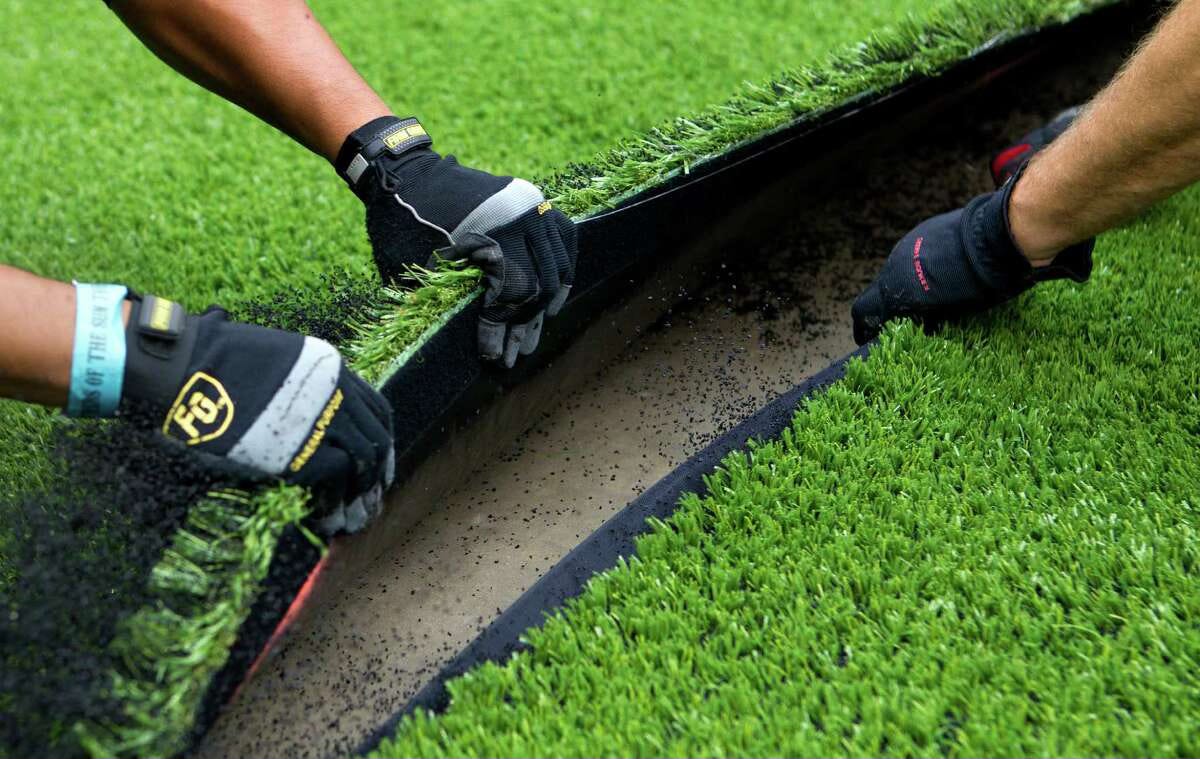Letter: Plastic Athletic Turf Proposal: A Dead End
Artificial field proposed for CVU on the eve of a new law that takes effect in January that prohibits fields with toxic chemicals commonly found in such fields.
Editor’s Note: At its meeting of Aug. 12, the Champlain Valley School District Board initiated discussion about installing an artificial turf field at CVU, largely for an all-weather practice field for several sports teams. Businessman Eli Lesser-Goldsmith said he was spearheading the effort with a goal of providing the field at no cost to the district. He declined to discuss the status of his plans at this juncture.
By Jennifer Decker
I am concerned by the renewed effort to install an artificial turf athletic field at CVU.
Act 131 states that “A manufacturer shall not manufacture [or] sell … artificial turf to which: PFAS have been intentionally added in any amount; or PFAS (toxic per- and polyfluoroalkyl substances) have entered the product [during] manufacturing.” This provision goes into effect Jan. 1, 2026.
Further, toxic runoff from the field could affect well water serving the schools, the town of Hinesburg, and, over time, communities downstream.
The proposal necessitates public discussion and rigorous review of health and environmental impacts. This ought to begin with a statement from the CVU school board about the status of the proposal, including transparency about the district’s fundraising agreement with an independent group. The effort to bypass democracy by using private funds forces a toxic field onto a community that opposes this change.
The town of Hinesburg has voted down athletic field bond measures in 2013 and 2015. Hinesburg’s State Representative Phil Pouech voted yes on Act 131, banning artificial turf with PFAS.
Synthetic fields are rife with drawbacks. The firm surface increases athletic injuries, including the risk of concussion by 6-7 percent. Artificial turf generates heat, can cause heat stroke and contributes to climate change. Manufacturing processes use perfluoroalkyl and polyfluoroalkyl substances (PFAS), and add PFAS to “grass.” Manufacturers mislead potential customers about the presence of PFAS “forever chemicals.” No turf field has ever tested negative for PFAS.
Artificial turf needs to be replaced every 6-10 years, a cost certain to fall on taxpayers. The fields shed hundreds of pounds of microplastics annually due to the grass blades breaking off. Microplastics enter human organs and blood, and kill wildlife. There are 95 carcinogens in crumb rubber infill, and infill maintenance requires annual replacement. Using an ecologically sustainable infill would not address the presence of PFAS or microplastics in the fake grass.
Internationally, soccer players refuse synthetic fields due to concern for the environment and athletes’ safety. We cannot subject young people to these risks, nor subject future generations growing up in Hinesburg to potential contamination of wells. Remember: PFAS bioaccumulates; 90 percent of Americans already have ‘forever chemicals’ in our blood, causing health issues ranging from cancer, to infertility, to learning issues in children.
Localities that have installed plastic fields in Vermont, prior to Act 131, rely on lake water. To be clear, synthetic fields do not belong anywhere. They are a particularly harmful idea in communities reliant on well water. It is incumbent upon the school board to protect its staff and future generations of students for ethical reasons. This proposal could also prove costly for future education and health care budgets, as PCBs did for the Burlington School District.
Synthetic fields are a dead end, thanks to Act 131. Let us enjoy spectator sports while preserving democracy, human health, and the earth we love, by supporting a grass field improvement plan at CVU that aligns with Vermont values and laws.



I agree 100 per cent with this article. Plastic is not the answer.
Vermont athletics have been playing on grass since athletics were begun years ago. If the field is muddy the players get muddy.
We go from drought to rain, it's part of the deal.
A lot of money has been spent over the years to build lots of playing fields at CVU, why can't we use them? A plastic field will just cause new problems down the road.
Paul Young
Hinesburg
A HUGE bundle of thanks to the writer who provides the TRUTH about synthetic grass.
Karl Novak
Hinesburg